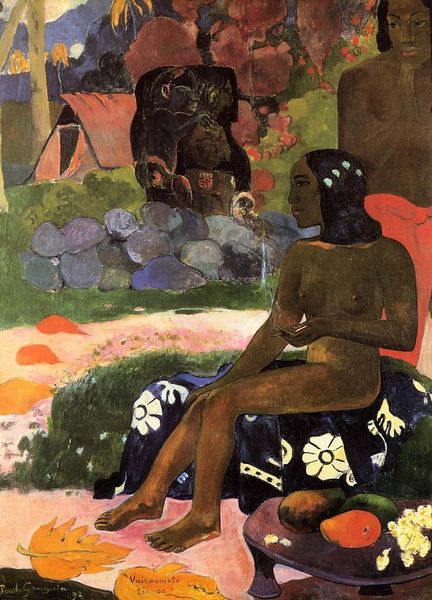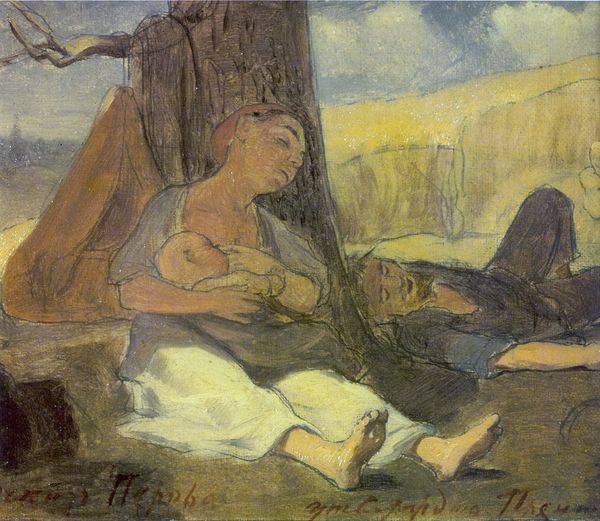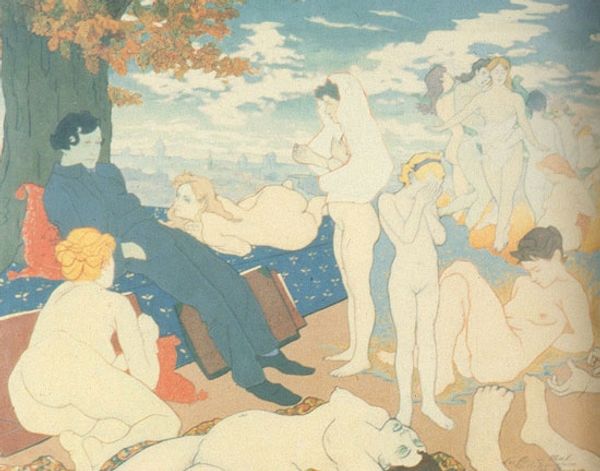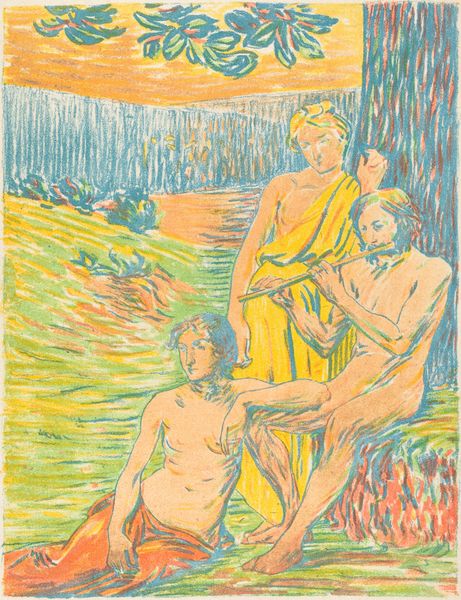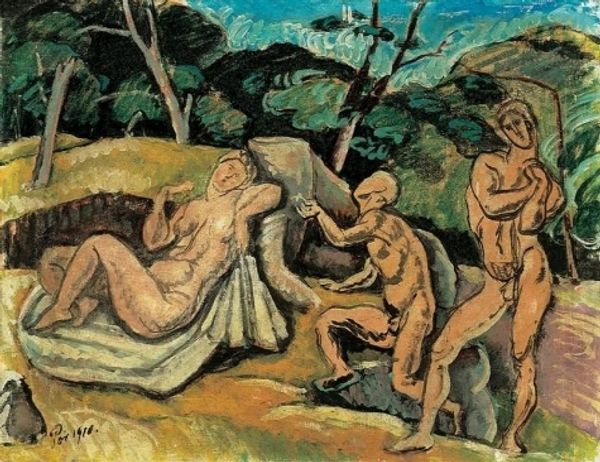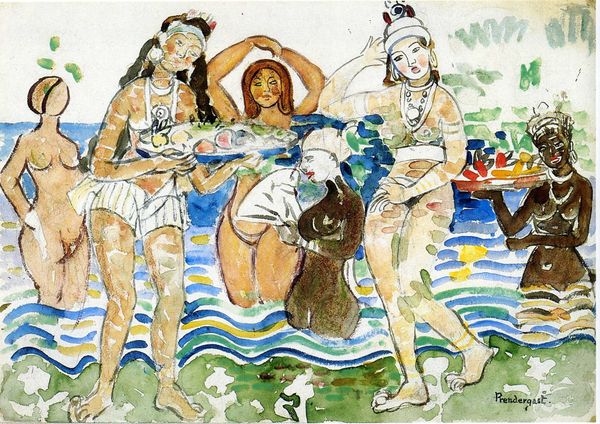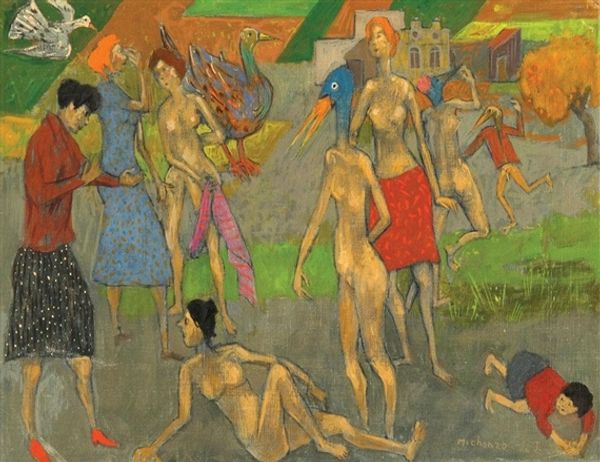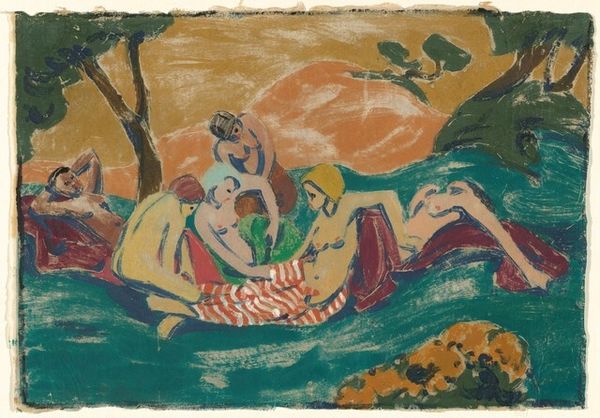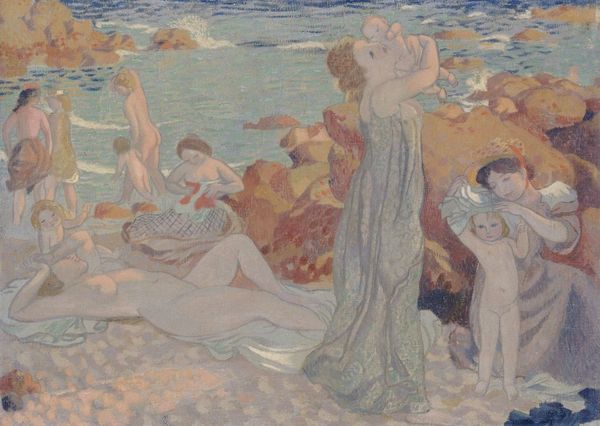
watercolor
#
figurative
#
landscape
#
figuration
#
watercolor
#
intimism
#
naive art
#
orientalism
#
post-impressionism
#
nude
Copyright: Public Domain: Artvee
Editor: This watercolor by Paul Gauguin, "Te arii vahine," from 1896-1897, feels both peaceful and a little unsettling. There’s this dreamy landscape, but something about the central figure's gaze makes me question what’s truly being depicted. How do you interpret this work? Curator: That sense of unease is perceptive. Gauguin's work is deeply implicated in the colonial narrative of its time. While ostensibly celebrating Tahitian life, paintings like this, need to be examined critically within the power dynamics of colonialism and its impact on the Tahitian people. Look at how the woman's body is presented. Do you see any possible issues related to the male gaze or exoticism? Editor: Well, she's nude, which, given the context, definitely complicates things. I guess it makes her vulnerable but is it a truthful depiction, or is he imposing a Western view? Curator: Precisely. Consider also the title – "The Princess." Is that an authentic Tahitian understanding of the figure, or a projection of Western ideas of royalty and exoticism onto a culture Gauguin only partially understood? His works romanticize the exotic at the expense of representing Indigenous perspectives accurately. Editor: So it is almost a fantasy, using Tahitian culture as a backdrop? I hadn't considered that interpretation. Curator: Exactly. Examining the artist's intentions in conjunction with the historical impact of his representation opens the artwork up to discourse. It compels us to consider how art can be both beautiful and deeply problematic when it reinforces asymmetrical power dynamics. Editor: I see what you mean, it completely reframes how I view the piece now. It is not a simple landscape anymore! Curator: That tension is important. By engaging critically, we acknowledge the complexities of Gauguin's work and confront its role in perpetuating certain stereotypes. It pushes us toward a more nuanced, socially conscious understanding of art history.
Comments
No comments
Be the first to comment and join the conversation on the ultimate creative platform.
